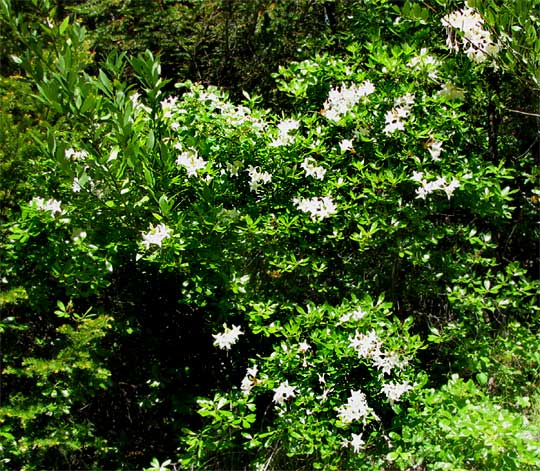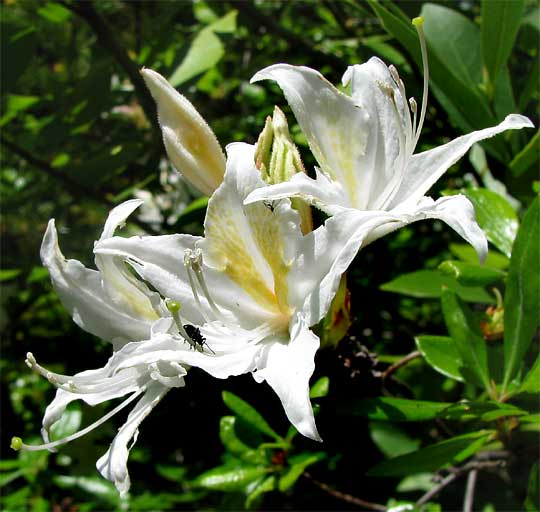Excerpts from Jim Conrad's
Naturalist Newsletter
from the May 31, 2009 Newsletter, issued from the Siskiyou Mountains west of Grants Pass, Oregon:
AZALEAS FLOWERING
The azalea/ rhododendron scene here in the West has an entirely different feeling from that of the East. First, keep in mind that the boundary between azaleas and rhododendrons isn't a sharp one. In general, azaleas bear deciduous leaves and their flowers possess 5-7 stamens, while rhododendrons produce evergreen leaves and their flowers have ten stamens. However, both azaleas and rhododendrons are members of the genus Rhododendron.
Weaklely's Flora of the Carolinas describes 19 species of Rhododendron for that region, of which 13 are listed as azaleas. Oregon is home to just two Rhododendron species: one rhododendron and one azalea. Our azalea is flowering now, shown below:

In the US Southeast azaleas are a varied, often hard-to-identify bunch, frequently rare and retiring. When flowering they can be like fabulous bouquets or big bowls of sherbet left in the forest. Oregon's azalea, the Western Azalea, RHODODENDRON OCCIDENTALE, is almost weedy by comparison. With smallish, white flowers, the plant grows ten feet high so vigorously that it forms thickets as if it were an invasive.
Still, it's an excellent species. Look at its flowers below:

Though the flowers are only two inches across they're powerfully fragrant, and produced in such profusion that sometimes when you walk into their pooled fragrance it's like walking by a fence overgrown with Japanese Honeysuckle back East. Western Azaleas can occur in odoriferous abundance in sheltered coves in mountains and foothills, along seepages and creek sides, and they occur here and there in drier spots. They're distributed from southwestern Oregon to southern California.